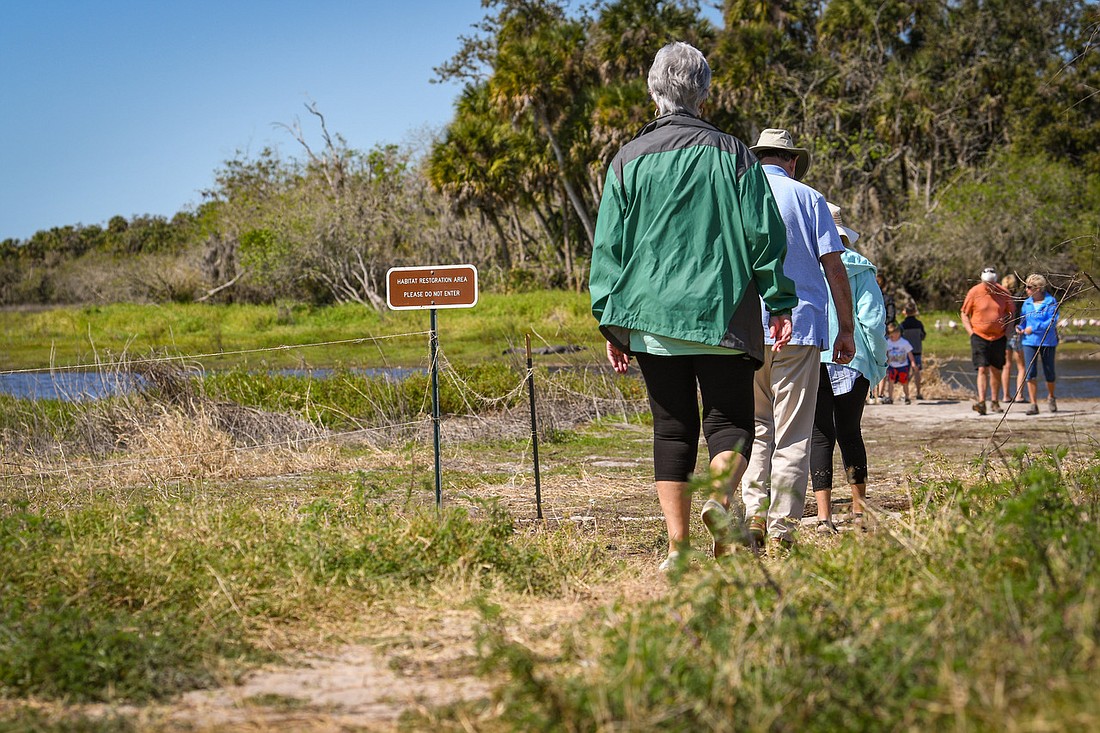- July 26, 2024
-
-
Loading

Loading

Myakka River State Park is renowned for exceptional wildlife viewing opportunities.
This wildlife abundance is dependent on healthy habitats — the natural environments in which these species live. The restoration of natural communities degraded by human alteration is therefore a priority at the park, not only for the benefit of wildlife, but for plants, insects and humans too.
An exciting example is the ongoing Floodplain Marsh Habitat Restoration project at the Upper Myakka Lake. As part of this project, to restore the natural flow of the Wild and Scenic Myakka River, a deteriorating weir built by the Civilian Conservation Corps in the 1930s was removed in 2022 and a bypass channel created in 1974 was filled in.
As to be expected, establishing native vegetative ground-cover in a newly created floodplain marsh, influenced by flooding on a regular basis, is a challenge. And as a popular area for recreation, trampling by park visitors further suppresses natural revegetation due to degradation of plant communities and soil compaction.
In addition to restoring an important habitat for native plant and wildlife, revegetation in this area is important for controlling erosion. So to help stabilize and revegetate the restored area, in addition to planting native vegetation, the park established habitat restoration zones which are off limits to park visitors.
As evidenced when these zones were first established earlier this year, wildlife is responding favorably not only to the improved habitat, but also to the protection provided by the restoration zones, which prevent human disturbances.
For example, unusually large flocks of shorebirds, including American avocets and black skimmers, a state threatened species, were attracted to the protected zone this past winter.
American alligators were frequently seen basking on the banks of the restoration zones, to the great delight of park visitors who took advantage of the opportunity for closer, safe viewings of the majestic apex predators and other wildlife.
By staying out of habitat restoration zones, we can help support these important efforts. And thanks to increased nearby wetland habitat available to wildlife with no human-related disturbances, we'll be able to enjoy superior wildlife viewing opportunities too.
Friends of Myakka River exists to support Myakka River State Park and the Wild and Scenic Myakka River. Together, we're protecting and sharing Myakka's Magic, to the benefit of future generations, and our own. Follow us @FriendsOfMyakkaRiver.